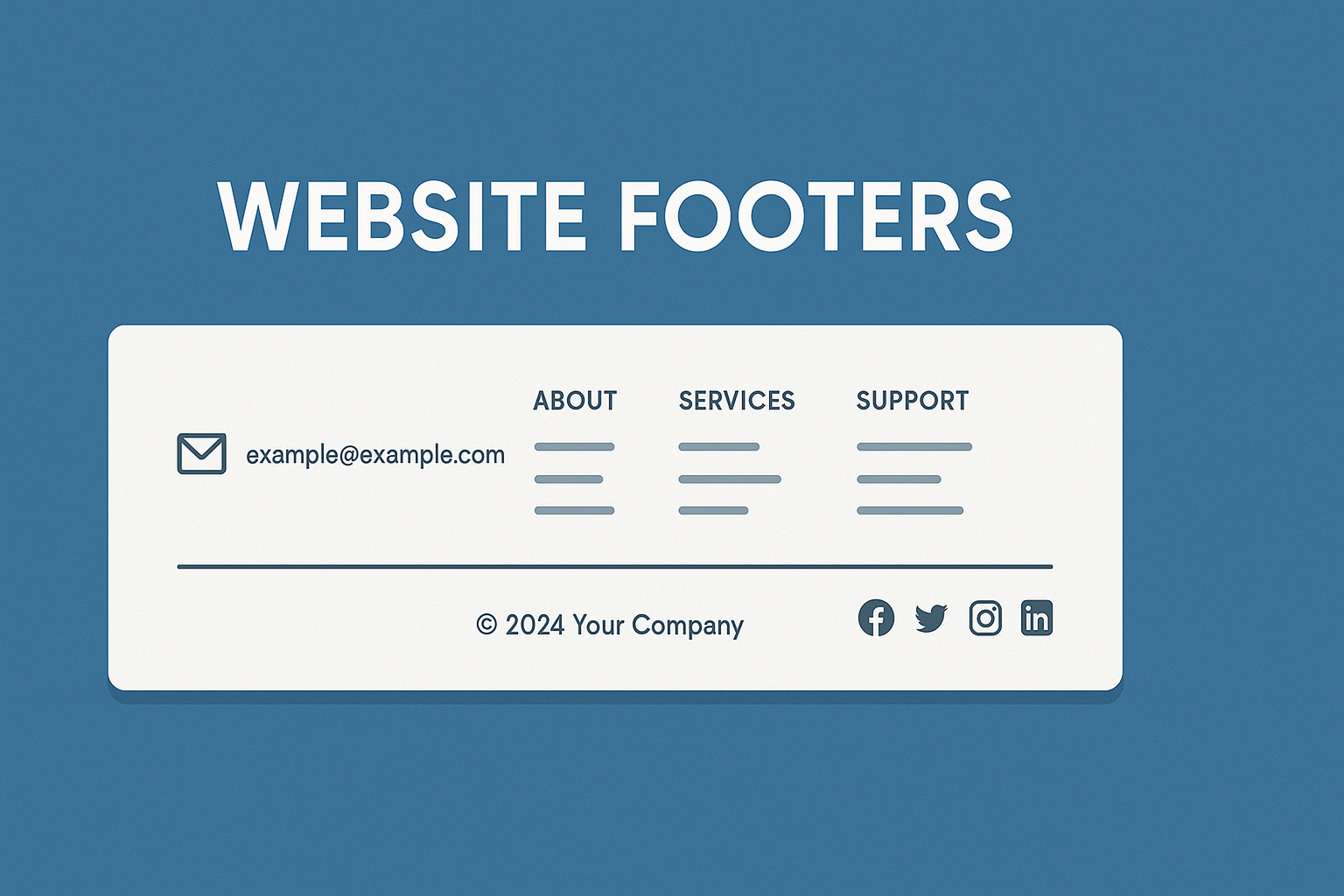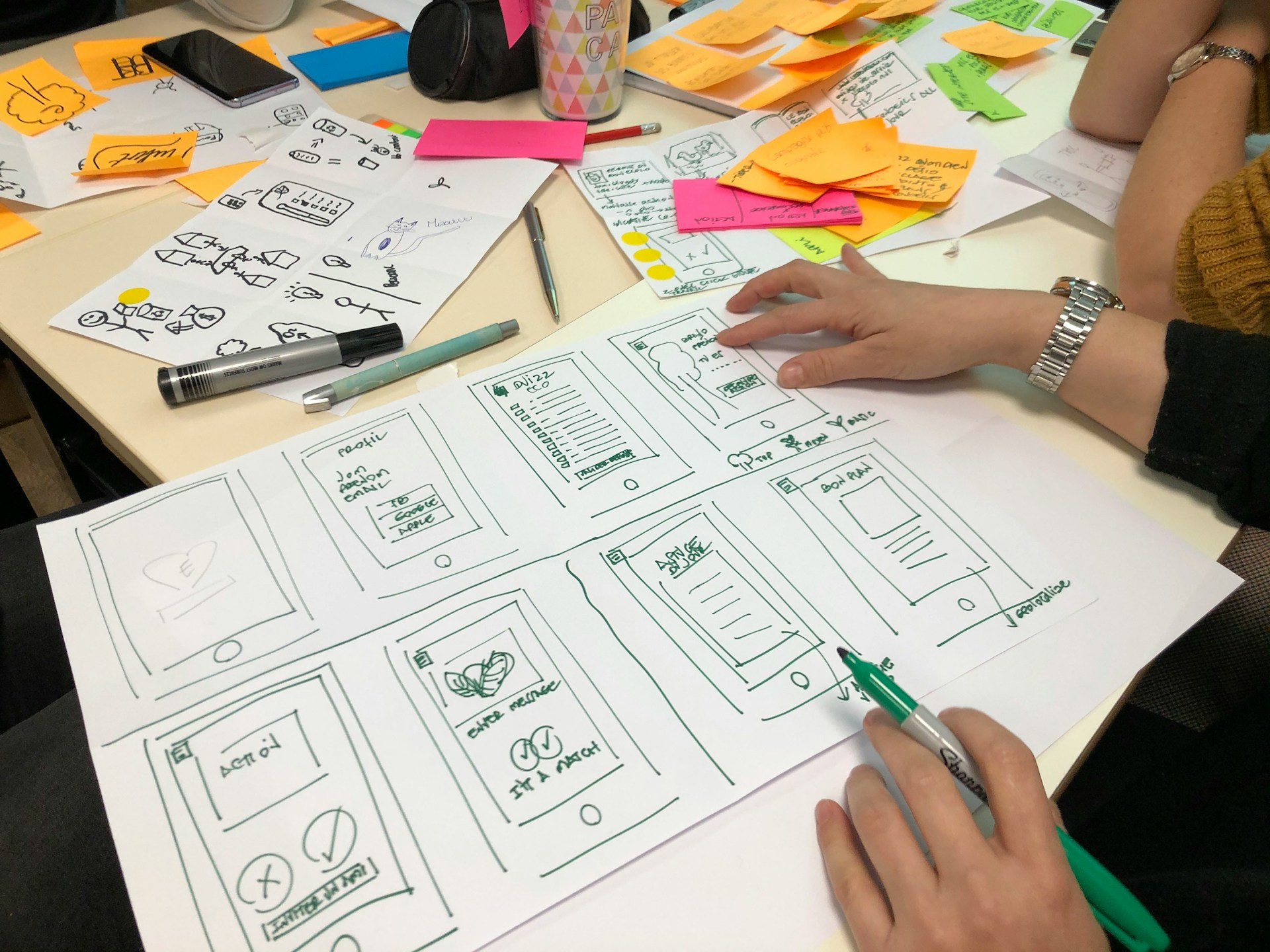Ever landed on a website where the text felt… wrong? Maybe the headings were fighting for attention, the body text made your eyes hurt, or everything just looked like a ransom note assembled from different fonts. That’s bad typography, and it’s silently killing your website’s credibility.
I just picked fonts that looked cool. Why isn’t anyone reading my content?
Typography isn’t just about picking pretty fonts – it’s the difference between a website that converts and one that makes visitors reach for the back button.
Good typography is invisible. Bad typography is like nails on a chalkboard. In 2025, with users spending mere seconds deciding whether to stay on your site, your type choices need to work harder than ever. Let’s fix the mess that’s probably happening on your site right now.
🔤 1. THE FONT CRIMES MOST WEBSITES ARE COMMITTING
Let’s start with the brutal truth: most websites are committing at least three of these typography sins right now.
Using Too Many Fonts
Three different fonts for headings? A fourth for your logo? A fifth for that “special” call-to-action? Stop. You’re not creating visual interest – you’re creating visual chaos. Stick to two font families maximum: one for headings, one for body text. That’s it.
- The ransom note effect – mixing serif, sans-serif, script, and display fonts like you’re building a ransom note
- Weight confusion – using ten different font weights when three would do the job better
- Style overload – italics, bold, underline, ALL CAPS, and shadow effects all fighting for attention
Ignoring Readability for “Cool Factor”
That ultra-thin font might look sleek in your design mockup, but good luck reading it on a phone screen in sunlight. Design trends come and go. Readability is forever.
📏 2. THE NON-NEGOTIABLE NUMBERS
Here are the actual numbers that separate amateur typography from professional work:
- Body text size: 16-18px minimum – Anything smaller and you’re forcing users to squint. Yes, even on desktop. Our eyes aren’t getting younger.
- Line height: 1.5-1.8 for body text – Cramped lines are exhausting to read. Give your text room to breathe.
- Line length: 50-75 characters per line – Lines that are too long or too short break reading flow. Count your characters.
- Heading hierarchy: at least 1.5x size difference – If your H2 is barely bigger than your paragraph text, it’s not doing its job.
- Font loading time: under 100ms – Beautiful fonts mean nothing if visitors leave before they load.
These aren’t suggestions. They’re the baseline for functional typography in 2025.
⚡ 3. CONTRAST ISN’T OPTIONAL
Light grey text on a white background might look “minimal” and “modern” in your design tool, but it’s completely unreadable for a huge portion of your audience.
The Web Content Accessibility Guidelines (WCAG) require a minimum contrast ratio of 4.5:1 for normal text and 3:1 for large text. That’s not a suggestion – it’s the legal standard in many jurisdictions.
Your aesthetic preferences don’t override your users’ ability to actually read your content.
Quick contrast fixes:
- Test your colour combinations with a contrast checker (WebAIM has a free one)
- Use true black (#000000) or near-black (#1a1a1a) instead of grey for body text
- If you must use coloured text, make sure it passes contrast ratios against its background
- Don’t rely on colour alone to convey meaning
And please, for the love of all that’s holy, stop using yellow text on white backgrounds.
🎭 4. FONT PAIRING WITHOUT THE GUESSWORK
Pairing fonts doesn’t require a design degree. It requires restraint and a few simple rules.
The Easy Formula:
Pair a distinctive heading font with a neutral body font. That’s it. The heading can have personality; the body text should get out of the way and let people read.
Safe combinations that actually work:
- Serif headings + sans-serif body (classic, always works)
- Bold sans-serif headings + regular sans-serif body (modern, clean)
- Display font for main heading only + sans-serif for everything else (distinctive but controlled)
What doesn’t work: script fonts with script fonts, serif with similar serif, anything paired with Comic Sans.
Pro tip: Using different weights of the same font family (like Roboto Light for body and Roboto Bold for headings) is perfectly valid and often better than forcing two different fonts to play together.
🚀 5. PERFORMANCE MATTERS MORE THAN PERFECTION
You found the perfect Google Font with 18 different weights and styles. Brilliant. Now your website loads like it’s on dial-up.
Every font file you load impacts performance. Each weight, each style, each variant adds to your page load time. And users will abandon your site faster than you can say “typography matters.”
Smart loading strategies:
- Only load the weights you actually use – You probably don’t need all nine weights
- Use system fonts as fallbacks – They load instantly because they’re already on users’ devices
- Consider variable fonts – One file, multiple weights, smaller file size
- Implement font-display: swap – Show fallback text immediately, swap in your font when it loads
Or go radical: use system fonts entirely. Sites like GitHub and Medium do it. They load instantly, they’re readable, and nobody complains about the typography.
Conclusion – Final Thoughts
Typography is one of those things that’s completely invisible when done right and painfully obvious when done wrong. You don’t need expensive fonts or a design degree – you need restraint, readable sizes, proper contrast, and respect for your users’ time and eyesight.
Go check your website right now. Look at it on your phone. Squint at the text sizes. Check those contrast ratios. And for the love of readable content, reduce those font families to two maximum.



